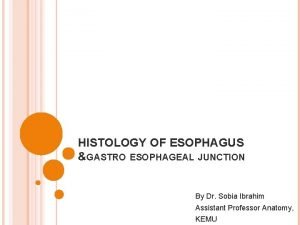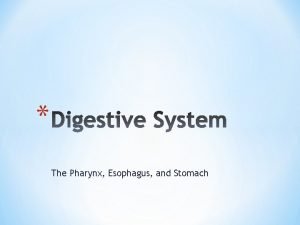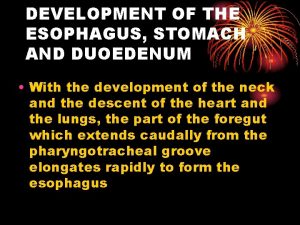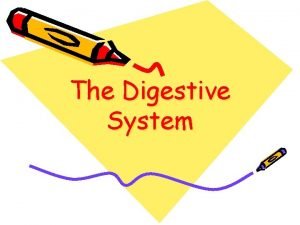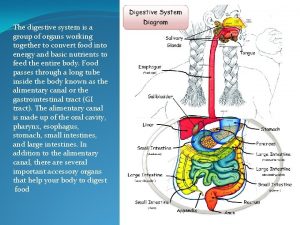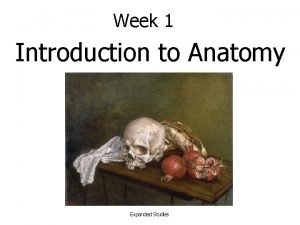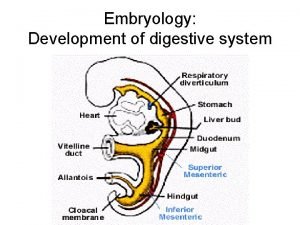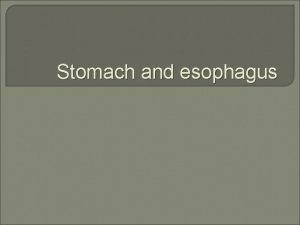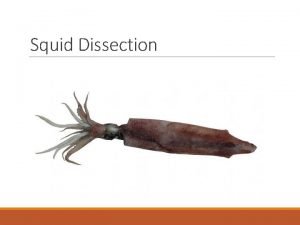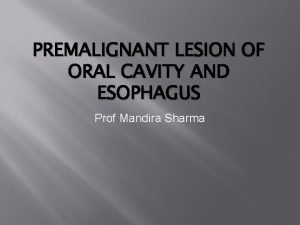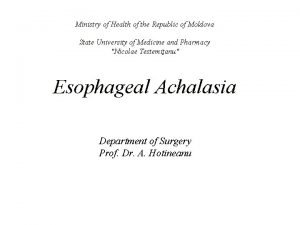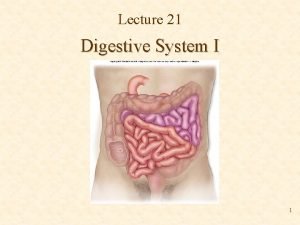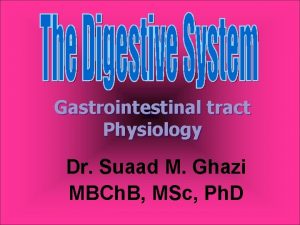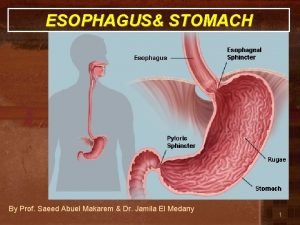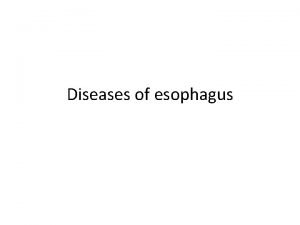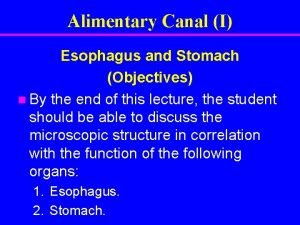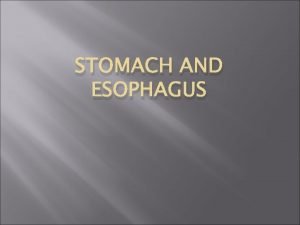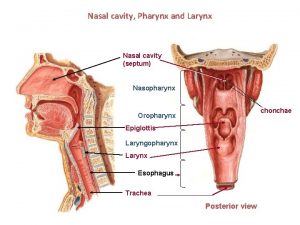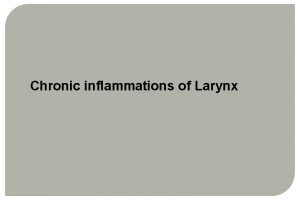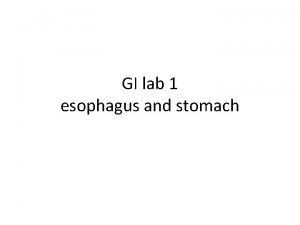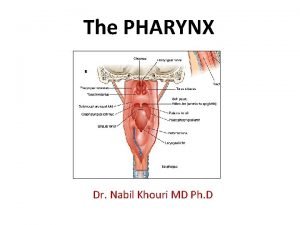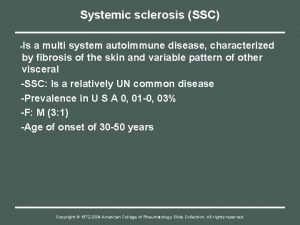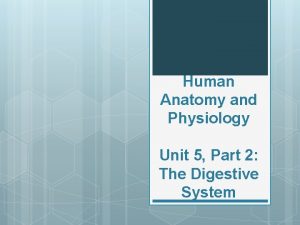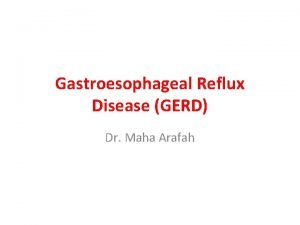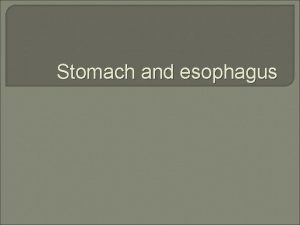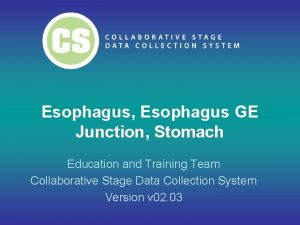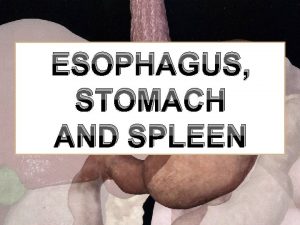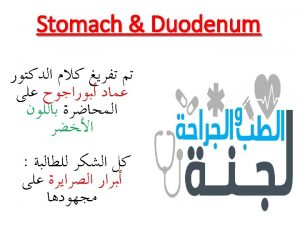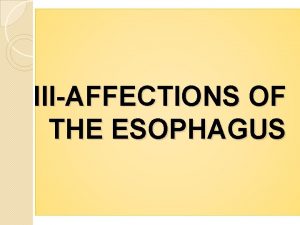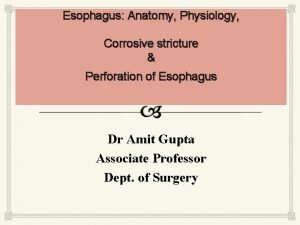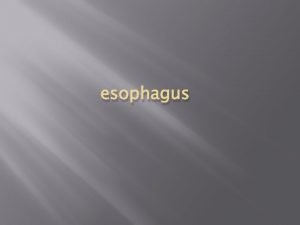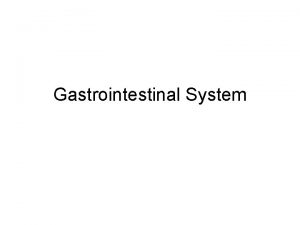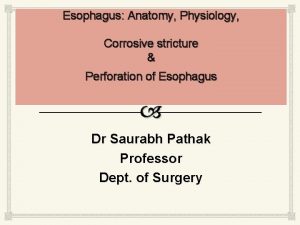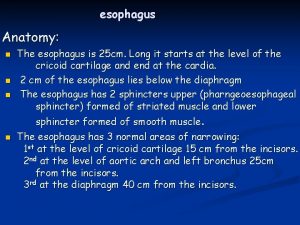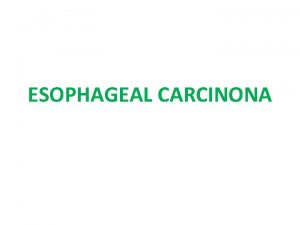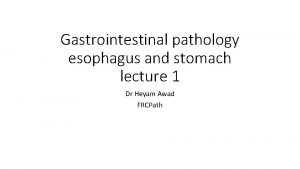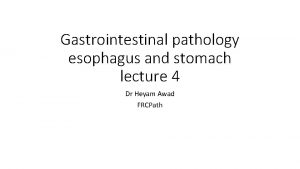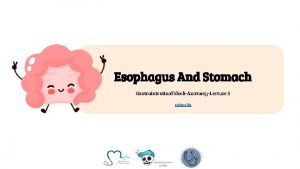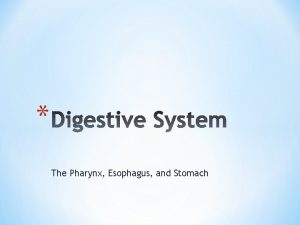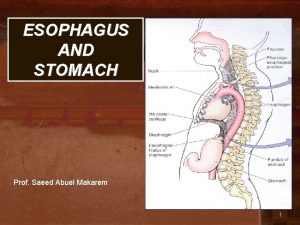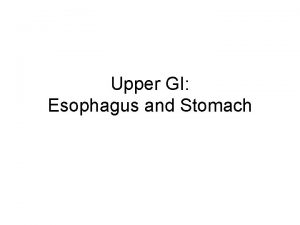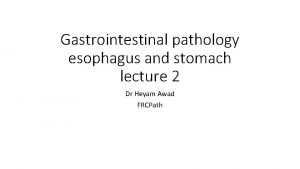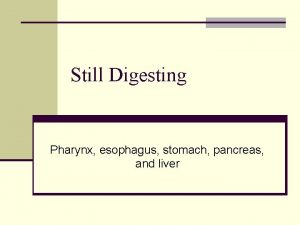DEVELOPMENT OF THE ESOPHAGUS STOMACH AND DUOEDENUM With
















![• The cranial portion [ pars hepatica] splits up into columns of cells • The cranial portion [ pars hepatica] splits up into columns of cells](https://slidetodoc.com/presentation_image_h/8bddd0e4ae11a478588009c8752d689e/image-17.jpg)










- Slides: 27

DEVELOPMENT OF THE ESOPHAGUS, STOMACH AND DUOEDENUM • With the development of the neck and the descent of the heart and the lungs, the part of the foregut which extends caudally from the pharyngotracheal groove elongates rapidly to form the esophagus

• This occurs at about 22 -23 days. • A groove called the laryngotracheal groove then appears in the floor of the esophagus. • The two structures are soon separated by the tracheoesophageal septum independently.

• The esophagus is attached to the posterior wall by the dorsal mesentery which remains short and thick. • The surrounding mesenchyme differentiates into a muscular layer which is striated in the upper two thirds and smooth in the lower one third.

• While the endoderm gives rise to the stratified squamous epithelium lining the inside of the esophagus • At the end of the second month the proliferation of the esophageal epithelium may close the lumen.

• Resulting in the formation of irregular communicating spaces within the cellular masses. • They soon disappear leaving a patent esophageal lumen. • Presence of webs or of mucosal diaphragms in the lumen of the esophagus may be due to incomplete resorption of these proliferation.

• During the fifth week, the stomach appears as a fusiform dilatation attached to the posterior wall by a dorsal mesentery called dorsal mesogastrium.

• According to the classic view the dorsal border of the stomach appears to grow faster than the ventral one. • And then to move from its medial position to left side.

• As a result clockwise rotation of 90 degrees occurs in which the left comes to face ventrally and the right dorsally. • The right vagus nerve follows the rotation and innervates the anterior wall.

• While the left vagus innervates the posterior wall. • The unequal growth of the lateral borders of the stomach results in the formation of the greater and lesser curvatures. • The dorsal mesogastrium expands towards the left nad forms the omental bursa

• The capacity of the stomach at birth is approximately 30 -90 cc • Increases rapidly in the first six months. • By the age of 1 year it is 200360

• The duodenum develops as a loop btw the terminal portion of the foregut and the most cranial part of the mid gut • This double derivation explains why the duodenum is supplied by branches of the coelic and superior mesenteric arteries.

• The primitive duodenal loop elongates and rotates to the right. • The dorsal mesentery mostly disappears by fusing with the peritoneum of the posterior wall.

• As a result the duodenum is retroperitoneal except for the initial and terminal portions. • The duodenum may at first be obliterated by proliferation of its mucosa but normally rcanalizes by the end of the embryonic period.

DEVELOPMENT OF THE SPLEEN • At the time the stomach starts its rotation, the spleen arises as a condensation of mesenchymal cells on the left side of the dorsal mesogstrium. • The anterior portion of the mesogastrium extends from the greater curvature of the stomach to the spleen and become the lienal ligament.

• The portion of the mesogastrium which fuses with the parietal peritoneum ventral to the left developing kidney forms the lienal– renal ligament • During the fetal life, the spleen is an active centre of hemopoesis and the red pulp contains myelocytes, erythroblast, and megakaryocytes.

DEVELOPMENT OF THE LIVER AND GALL BLADDER • In the middle of the third week the liver appears as a proliferations of the endodermal lining of the duodenum btw the foregut and midgut. • The thickening is called hepatic diverticulum or bud. And it grows into the septum transversum
![The cranial portion pars hepatica splits up into columns of cells • The cranial portion [ pars hepatica] splits up into columns of cells](https://slidetodoc.com/presentation_image_h/8bddd0e4ae11a478588009c8752d689e/image-17.jpg)
• The cranial portion [ pars hepatica] splits up into columns of cells which penetrate between the plexus of the vitelline veins within the septum transversum. • These endodermal cells [hepatic trabeculae] forms the right and left lobes of the liver.

• The mesenchymal cells of the septum transversum differentiate into the capsule, the connective tissue of the liver and into the stellate cells of the Kupffer. • The caudal portion [ pars cystica] of the hepatic diverticulum expands into the ventral mesentery and gives rise to the gall bladder, cystic duct, and common bile duct.

• The structures that take part in the development of the venous circulation of the liver are the • The Septum transversum vitelline umbilical vein developing hepatic cells

• The septum transversum consist of a mass of mesenchymal cells between the pericardial cavity and the yolk sac and forms part of the diaphragm.

• Within the septum and before reaching the sinus venosus the vitelline veins form a plexus which later joins with a similar one formed by the umbilical veins. • The interval between the meshwork become filled with blood from the vitelline and umbilical veins and the hepatic sinusoids are formed

• The vitelline and the umbilical veins undergo the following modifications. • The vitelline veins form two plexuses, one before entering the liver around the duodenum and the other in the liver. • The right vitelline veins around the duodenum disappear and a single vessel results, the portal vein, which is formed by the union of the suprior mesenteric and spleenic veins

• The umbilical veins initially anastomose with the liver sinusoids. • Then the right and the proximal part of the left vein atrophy. • The distal portion of the left umbilical vein remains as the only vessel between the placenta and the liver.

• With increased placental circulation, the left umbilical vein enlarges and forms the venous trunk called ductus venosus, which bypasses the sinusoids of the liver carrying oxygenated blood to the heart.

• After birth, the left umbilical vein obliterates and forms the ligamentum teres in the lower margin of the falciform ligament. • The obliteration of ductus venosus results in the formation of the ligamentum venosus.

Congenital defects of the digestive system • Oesophagus: • Esopgageal atresia • Tracheo-esophageal fistula • Stomach: • Hypertrophic pyloric stenosis

 Esophageal gastric junction histology
Esophageal gastric junction histology Picture of stomach organs
Picture of stomach organs Duoedenum
Duoedenum Digestive system for labelling
Digestive system for labelling Esophagus stomach small intestine large intestine
Esophagus stomach small intestine large intestine Cural
Cural Stomodeum and proctodeum
Stomodeum and proctodeum Lymphatic drainage of stomach
Lymphatic drainage of stomach Squid taxa
Squid taxa Epidermoid carcinoma
Epidermoid carcinoma Tortuous esophagus
Tortuous esophagus Pharynx and oral cavity
Pharynx and oral cavity Enterochromaffin like cells
Enterochromaffin like cells Parts of abdomen
Parts of abdomen Parts of oesophagus
Parts of oesophagus Esophagus narrowing anatomy
Esophagus narrowing anatomy Mediastinitis
Mediastinitis Mechanical obstruction of esophagus
Mechanical obstruction of esophagus Rugae in stomach
Rugae in stomach Stomach blood supply
Stomach blood supply Larynx
Larynx Mouse nibbled vocal cord
Mouse nibbled vocal cord Gastric
Gastric Pharyngeal musculature
Pharyngeal musculature Arthrlgia
Arthrlgia Stomach
Stomach Barrett's esophagus
Barrett's esophagus Pvt tim hall
Pvt tim hall
